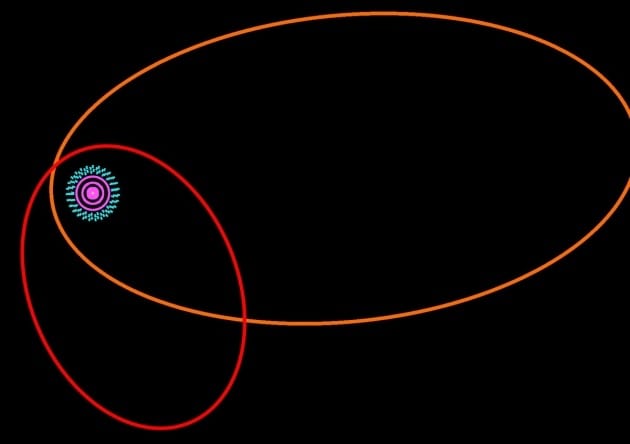Scientists Discover Dwarf Planet
The newly discovered dwarf planet 2012 VP113 was discovered by astronomers at the Carnegie Institution of Science, Washington last week.

The newly discovered dwarf planet 2012 VP113 was discovered by astronomers at the Carnegie Institution of Science, Washington last week.
2012 VP113, with a diameter of 450km is the smallest celestial body to lay claim to the title of the most distant planet in the solar system, usurping dwarf planet Sedna (discovered 2003). Precisely, while Sedna is the body in the solar system that travels furthest from the Sun, with an orbit ranging from 76-937 AU (Astronomical Units - 1 AU is the distance between the Sun and the Earth), 2012 VP113's minimum distance from the Sun is 80AU, and so qualifies as the most distant solar system object when ranked by minimum distance.
Endearingly called 'VP' or 'Biden' after the current US Vice President, the discovery of the dwarf planet proves the existence of the inner Oort cloud (or Hills cloud), a doughnut-shaped region in the spherical outer Oort cloud. The Oort cloud is a region of icy bodies (composed of ices including water, ammonia and methane) that exists far outside Neptune's orbit.
Looking at the elliptical orbits of both 2012 VP113 and Sedna, astronomers believe that there may be a large undiscovered planet that interfers with their orbits due to its large gravitational pull. Nicknamed "super-Earth", this planet would in theory need to have a mass 10 times greater than Earth and orbit the Sun at roughly 250 AU.







